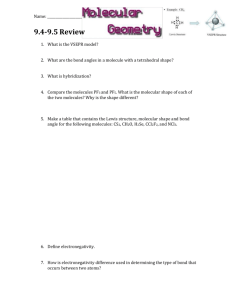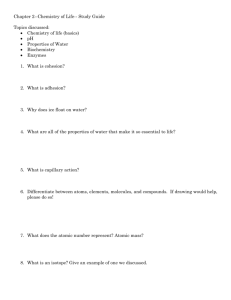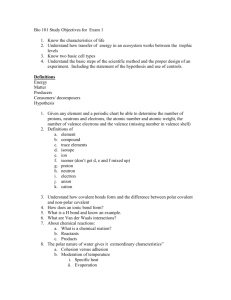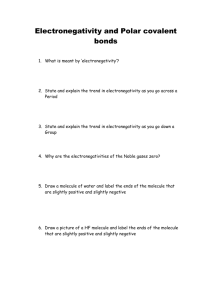AP Biology - Biology for Life
advertisement
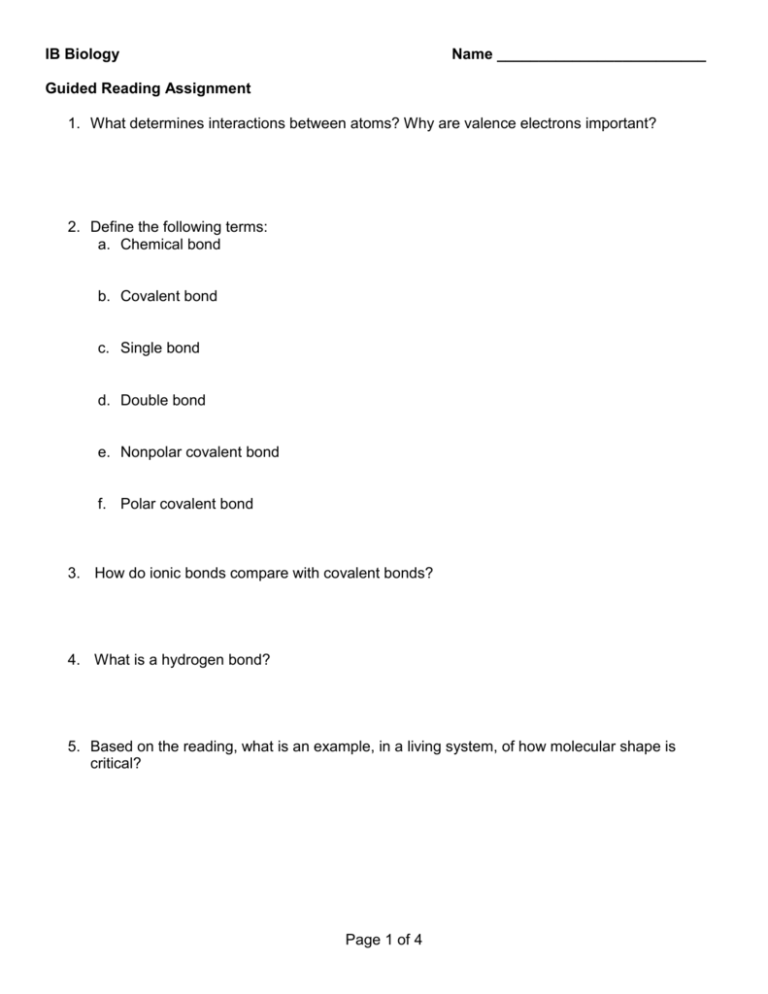
IB Biology Name _________________________ Guided Reading Assignment 1. What determines interactions between atoms? Why are valence electrons important? 2. Define the following terms: a. Chemical bond b. Covalent bond c. Single bond d. Double bond e. Nonpolar covalent bond f. Polar covalent bond 3. How do ionic bonds compare with covalent bonds? 4. What is a hydrogen bond? 5. Based on the reading, what is an example, in a living system, of how molecular shape is critical? Page 1 of 4 Chapter 3 Guided Reading Assignment 1. Why is water considered a polar molecule? 2. For each of the below listed properties of water – briefly define the property and then explain how water’s polar nature and polar covalent bonds contribute to the water special property. Also include an example in nature of each property. a. Cohesion b. Adhesion c. Surface tension d. High specific heat 3. What is special about water and density? 4. Define the following terms: a. Solute b. Solvent c. Hydrophilic d. Hydrophobic Page 2 of 4 Chapter 4 Guided Reading Assignment 1. Why is organic chemistry so important in the study of biology? 2. What is special about carbon that makes it the central atom in the chemistry of life? 3. Draw the structure of each functional Hydroxyl Amino Carboxyl Phosphate Chapter 5 Guided Reading Assignment 1. Label the diagram below – identify a monomer, polymer, condensation reaction, and hydrolysis. Page 3 of 4 2. What are the three hexose monosaccharides? 3. Draw the condensation reaction showing the attachment of 1 glucose molecule to another glucose molecule. (draw each atom of the glucose) 4. Compare and contrast the two storage polysaccharides. 5. Compare and contrast the two structural polysaccharides. 6. Why are lipids grouped together? 7. What are the building blocks of fats? Draw their molecular structure. 8. Contrast saturated and unsaturated fats. 9. Label the molecule to the right. 10. How would you recognize a basic steroid molecule? Page 4 of 4


